Things to see in Galle
A large number of well-preserved mansions and houses are among the main things to see in Galle, dating back to the 15s and 16s are converted into hotels, bars, restaurants, galleries, shops, and museums. Several well-preserved and partly restored churches are still serving the devotees.
Table of Contents
- Where should I visit in Galle Sri Lanka? What are the things to See in Galle in 24 Hours?
- What do you see in the Galle Fort?
- Diving, snorkelling, and swimming in Galle
- Bungee jump without an elasticized rope in Galle
- Exploring the city on Galle one-day tour trip to Colombo
- Galle one day tour in a nutshell
Where should I visit in Galle Sri Lanka? What are the things to See in Galle in 24 Hours?
- Martin Wickramasinghe folk museum
- Maritime Museum of Galle
- Underwater living beings in Hikkaduwa
- Koggala lagoon
- Kathaluwa Buddhist Temple
- Galle Fort
“Why anyone should spend time in southern Sri Lanka and Galle?” someone might ask you, well what would be the answer for it? You might be wondering. I justify the visit to Galle in this manner, “Well it’s a rare opportunity to witness a 16th-century European city in Asia, which is still in its best condition”. Galle is a historically important city and Galle Fort is one of the most important parts of Galle. Venturing on a Galle tour is the best way to explore this charming and beautiful city of Southern Sri Lanka.
Galle Fort is the best place to see one of the best-preserved Dutch forts in the world, which was originally built by the Portuguese in 1505, and later occupied by the Dutch and English. Even though the foundation stone for the fort was laid by Portugues in 1505, the fort was expanded to the size that we see today under the Dutch East Indian Company (1656-1796).
Galle, it is the birthplace of Buddhist resurgent after the harsh British colonial rule, the home town of Galle district, has the amazing collection of galleries, museum, shops, eateries, the vibrant and colourful city”.
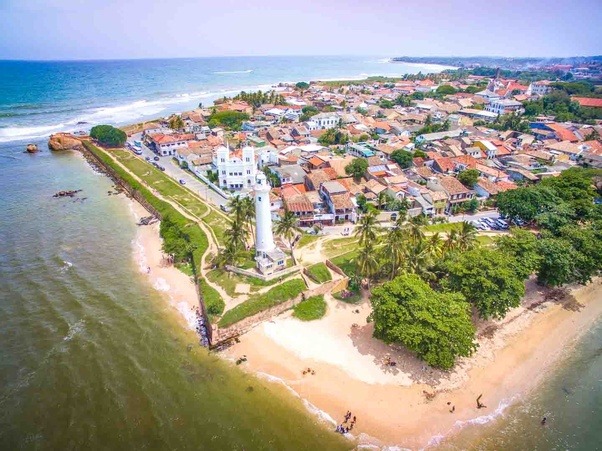
On reflection, most tourists that visit Galle are not really surprised at the banter. Galle and many attractions in the region are still under the cosh of its popularity as being run-down and a little unpopular. Yet Galle, especially the Galle Fort, has spent the last several decades going through a resurgent process where forlorn mansions and iconic buildings have been and are still being restored. Galle city was given a facelift in the recent past to make it one of the most attractive cities on the island.
What do you see in the Galle Fort?
- Dutch styles mansions
- Hotels
- churches
- Visiting Buddhist temples
- Restaurants
- Galleries
- Cafes
- Bars
- shops
- Museums
The busiest part and among the most popular tourist places of Galle is the fort, which is also a family-friendly trip place in Sri Lanka and offers many interesting activities for kids as well as adults. in fact, Galle fort is part of most Sri Lanka trips such as 5 days of Sri Lanka’s southern trip. Galle is among the most popular tourist places to visit in Sri Lanka, which is among the most important things to See in Galle, where the largest concentration of hotels, bars, museums, and many other tourist attractions are to be found.
A large number of well-preserved mansions (most of them are converted to holiday bungalows) and houses, dating back to the 15s and 16s are converted to hotels, bars, restaurants, galleries, shops, and museums. Several well-preserved and partly restored churches are still serving the devotees.
Diving, snorkelling, and swimming in Galle
In any case, Galle, part of the southern province of Sri Lanka, is known for many amazing tourist places, most of which are very important for the island’s economy. One important tourist attraction of Galle is the pristine beaches with torque water, an amazing collection of natural attractions such as lagoons, diving sites, patches of forests and cultural attractions along with colonial heritage are the other key tourist attractions in Galle.
Apart from the Galle Fort, Galle is also very popular for some of the best beaches for beach holidays. Galle is surrounded by many palm-fringed pristine beaches such as Hikkaduwa, Unawatuna, and Devata. Most of these beaches provide some of the best places on the island for surfers and divers. Hikkaduwa marine sanctuary is a popular place for snorkelling. However, Devata beach which sits just south of Galle is not very popular for diving or snorkelling. However, it has a stock of coral reefs, a fascinating collection of exotic fish species and sea turtles, and most importantly; the travellers encounter all just a few meters away from the beach.
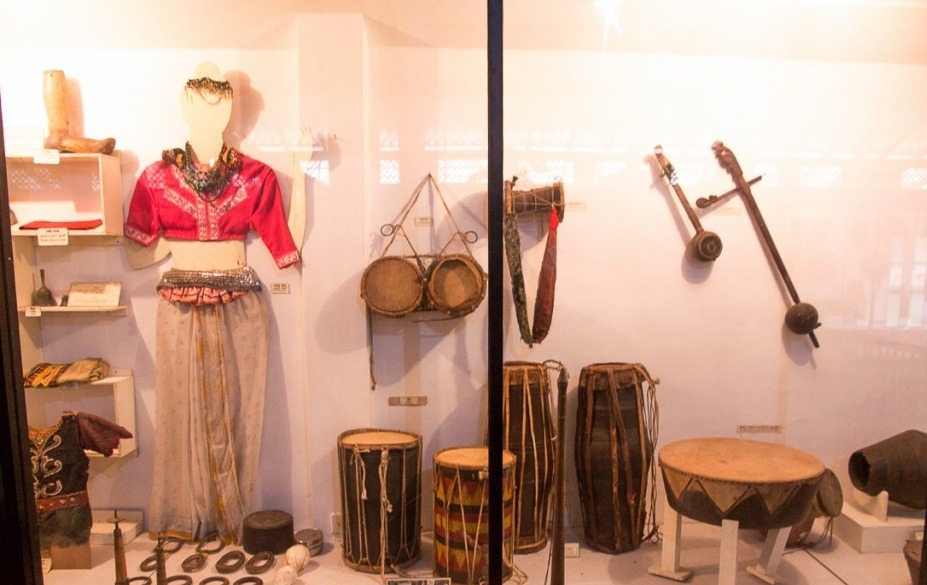
Must tour the Martin Wickramasinghe folk museum
Martin Wickramasinghe museum is not included in the Sri Lanka day trip to Galle. Most Galle tour packages from Colombo and elsewhere include important places such as Fort, palm-fringed beaches, mask museum, gem museum, etc, but not Martin Wickramasinghe museum.
Galle has a long history connected to the veteran writer Martin Wickramasinghe. Martin Wickramasinghe is widely known as the father of modern Sinhalese literature. Most of his literal works were carried out in search of the lifestyle and cultural aspects of the Sri Lankan people. He was very keen to explore and apply modern knowledge in social and natural science, linguistics, literature, education, the arts, philosophy, religion, and comparative religion.
A visit to the Martin Wickramasinghe museum is a must if you are an enthusiast of foreign culture, history, and lifestyle of the people. The museum is a large snapshot of Sri Lankan life depicted through a massive collection of items such as arts and crafts, kitchen utensils, household items, farming items, fishing gears, hunting equipment, furniture, and even bullock carts.
At the martin Wickramasinghe museum, you will get to see the well-preserved village house of Martin Wickramasinghe along with his household items, such as beds, writing table, chairs, etc. The museum exhibits a large collection of items dating back many generations. The folk museum is visited by many hundreds of people and schoolchildren every day.
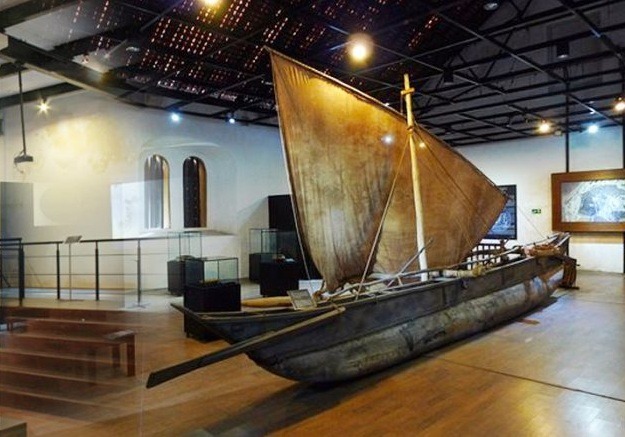
Things to see in Galle – The Maritime Museum of Galle
You can also visit the maritime museum of Galle, which is located within the borders of Galle Fort, near the Wolvendaal church. The maritime museum showcases a large collection of artefacts discovered in the sea off southern Sri Lanka. Most of these artefacts were rescued from the merchant ships that perished in the sea. The museum itself is housed within one of the oldest buildings of the fort. It had been the storage complex of the Dutch East India Company, where the large stock of export products such as spices, ivory, and gems was stored before the shipment.
There is an impressive collection of artefacts numbering more than 200 in the museum that are recovered from the seabed during the exploration and some of the items are nearly 800 years old. Some of the important artefacts recovered from the seabed represent a ship anchor of a ship that sank in the 1800S, the soda bottles dating back to the 1600s, the remnants of the ship that was transporting them, fossils of sea creatures, and miniature skeletons of a whale.
One of the most important exhibits of the museum is a diorama of historical inhabitants in the Hambantota district. They are believed to be lived about 7000 years earlier. Another valuable artefact is a tri-lingual stone inscription that is written in Chinese, Tamil, and Persian languages. It is believed to be written 600 years earlier in China and later brought to the island.
It also shows the methods of traditional fishing, fishing gears, and fishing vessels of the country. Some of the articles among the exhibits are ropes used in vessels, old canons, porcelain items, smoking pipes, maps, and shipwrecks. A valuable artefact of the museum is the model of the ship Avondster (evening star) that sank in the port of Galle. The model of the ship and the artefacts recovered from the ship can be witnessed in the museum. The ship perished in 1659 AD.
Galle maritime museum was established by the Central Cultural Fund of Sri Lanka under the conservation program of the Galle world heritage site. The museum showcases the cultural and religious aspects of the people of southern Sri Lanka. It gives an idea of the convergence of Sri Lankan culture, trade, language, and tradition with other foreign nations.
One of the important functions of the museum is to educate the people on the fragile maritime ecosystem of the sea. It shows a specimen of a large number of sea creatures such as fish, corals, seagrass, and algae. One can see the causes of sea pollution and coastal erosion and precautions that one needs to observe to stop the destruction.
One can visit the laboratory of the archaeological museum and witness the process of conservation of items with historical value. It provides a rare opportunity of acquiring hands-on experience in conserving items in a laboratory. The historical value of the artefacts represents the period from 8000 B.C to the present millennium.
There are many other interesting artefacts to see in the museum such as models of ancient ships that submerged in the sea off Galle, locally used fishing nets and fishing methods, ancient coins, and clay pots, a model of mangrove forests, boats, and canoe.
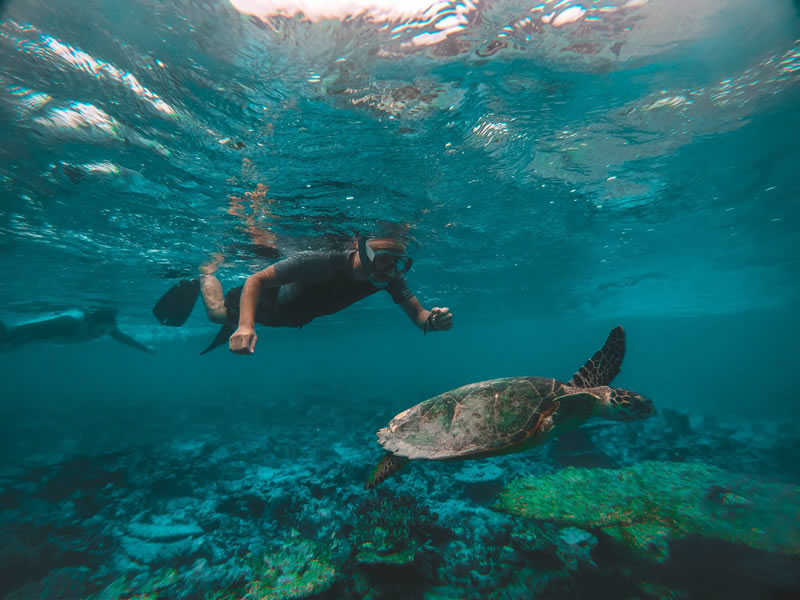
Must see some underwater living beings
Unawatuna Bay located about 10 km from Galle city, is the most loved beach holiday destination in the region and it is the home to a cluster of small hotels, guest houses, and rest houses with occasional star-class accommodation providers.
Unawatuna beach just south of Galle is one of the all-year-round sea bath places in Sri Lanka. Unlike many other sea bathing areas on the southern and west coast of Sri Lanka, where sea baths can be dangerous during the southwest monsoons, Unawatuna enables you to dip into the ocean and have a sea bath at any time of the year.
The coral reef off the sea of Unawatuna provides protection against the underwater current while downgrading the force of waves. These coral reefs also harbour a large collection of exotic fish species, sea turtles, sea plants, and many other sea creatures.
Things to explore in Galle Koggala lagoon
Koggala lagoon covers a surface of about 7.27 km2 (2.81 sq mi), the length of the lagoon is 4.8 kilometres and the width of the lagoon is 2 kilometres. The lagoon has a shallow water surface area, which measures to be around 1 meter in-depth, and the deeper part of the lagoon measures 1 meter to 3.7 meters. The main water source of the lagoon is the monsoon rain while a few streams such as the Mudiyansege-Ela stream, Thithagalla-Ela stream, and Heen-Ela also feed the lagoon.
Koggala lagoon is one of the main tourist attractions in the area and has rich biodiversities and ecosystems. Koggala lagoon rank as one of the best places for boat tours in Sri Lanka. Koggala boat tour is also popular as the Madu river safari as well as the Bentota boat tour. Drifting through the mangrove forests during the boat trip will be a fantastic experience for nature lovers. You will be able to see a large collection of mangrove trees and plants as well as aqua Fauna species and many animal species such as water monitors, land monitors, monkeys, crocodiles, etc.
The visitors are also able to drop into one of the 8 small islands in the wetland. The most popular island is “Madol Duwa”, which is featured as a place for fun-filled activities in one of the novels (Madol Duwa) written by Martin Wickramasinghe. These islands are formed by the lush mangrove swamps. The tour will last about 2 hours giving you the pleasure to live in the untamed wilderness. Madol Duwa boat tour is popular in Sri Lanka, especially among the local people, that gives you the perfect opportunity to see many mangrove species including 10 mangrove species endemic to Sri Lanka.
Keep your antenna up and have your attention on mangrove roots that are shooting up from the muddy surface, these roots are coated with a variety of creatures such as barnacles, oysters, and crabs. Mangrove forests with dense and intertwining roots are well stocked with many fish species, shrimps, and crabs and are a very valuable fish-feeding ground.
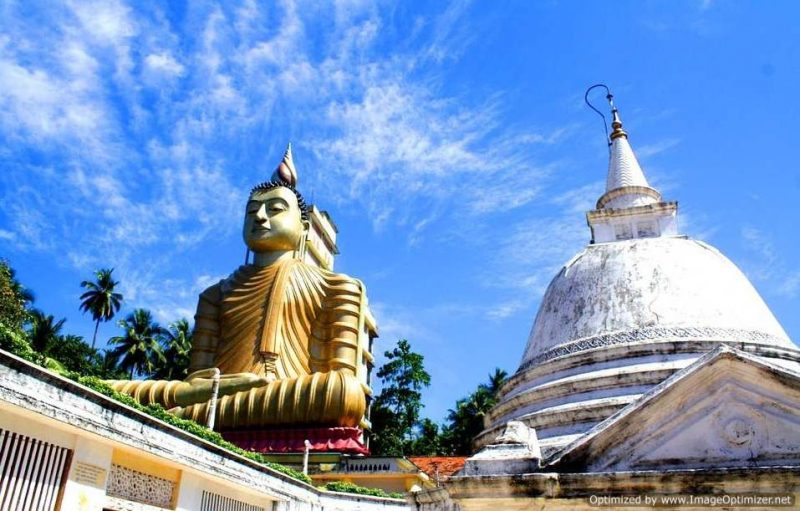
Things to see in Galle: Kathaluwa Buddhist Temple
In addition to the natural attractions and scenery, Kataluwa Purana Raja Maha Vihara (Kathaluwa Buddhist Temple) is one of the important cultural attractions as well as a religious and important historical site in the lagoon. This Buddhist temple is a popular pilgrimage site for Buddhista and a large number of Buddhist devotees gather here specially on every full moon day. So, if you can visit the temple on a full moon day you will be able to ee the temple as it functioning at its full capacity.
The temple features very valuable Buddhist paintings dating back more than a century. Some paintings are depicting scenery from the colonial era and in one of the paintings, Queen Victoria commemorates her support for local Buddhism while the British government supports the British missionary Christianity in the backdrop.
Things to see in Galle – The best-preserved Dutch Fort in Asia
The trip to Galle Fort is best described as a Sri Lanka heritage tour, as it unfolds the rich colonial heritage of southern Sri Lanka before your eyes. For an unforgettable eyeful of splendour take a tour of Galle Fort, hundreds of thousands of architectural masterpieces ornate the Galle Fort, which is one of the most popular landmarks in southern Sri Lanka. Galle Fort is a UNESCO world heritage site and the fort is surrounded by a gigantic wall.
Its historical value is great that’s the main reason that it is coming under important things to see in Galle. The fort served as the administrative capital of southern Sri Lanka during the Dutch colonial era. Today it serves as the single most important tourist attraction in Southern Sri Lanka, where tourists can see many hundreds of well-preserved Dutch architectural buildings dating back to the 15s.
The Portuguese arrived in Galle in 1505 AD and built Galle Fort, on the southwest corner of the island, bordering the Indian Ocean. Galle is the major city between Deep South Sri Lanka and the commercial capital of Sri Lanka known as Colombo. Later, the Dutch and British left their mark. The old town (Galle Dutch fort) occupies the western corner of Galle city and lies well above Galle city.
Without a doubt, Galle fort is very easy on the eye. Picture a scene of tightly packed stone dwellings scattered on a flat surface, houses and buildings are so tightly compact that most of the time there is no distance between 2 buildings. All building is in Old Dutch style with a steep roof, big verandah, big windows, and large doors. Rows of picturesque houses, shops, and mansions line up along the narrow cobbled streets painted in various distinctive pastel shades, and the view from the southern part of the rampart is dominated by the Wolvendaal Church, originally built by the Dutch as a church.
Bungee jump without an elasticized rope in Galle
This spectacular and adventurous performance is undertaken voluntarily by a group of youth to entertain the spectators. Jumpers have started their brave act in 2009 and today they are popular throughout the island of Sri Lanka due to their bungee jumping without an elasticized rope.
They are being sponsored by popular trademarks due to their popularity and large numbers of articles are written about their dangerous act. They have done thousands of jumps so far and every jump is thoroughly enjoyed by the spectators. Flat rock bastion in Galle Fort, Sri Lanka, is the venue to see this acrobatic spectacle. They are rewarded with some money by the people for their performance, who enjoy seeing their jump.
But the jump can be very dangerous because they can be landed on the rocks with a very slight mistake. The rampart is about ten meters high from the water surface at the Flat rock bastion and the gap between the rocks and the stone wall of the fort is not more than one meter. It is very important to keep an adequate distance between the rocks and the wall of the fort, during the jump. This near-death act is performed by five lads namely Chamara, Lasantha, Chinthaka, Rawan, and Ranga.
The jumpers take the lift after three meters run and instantly jump into the sea targeting the patches of water between the rocks. They have mastered their own techniques and they are very accurate even on very windy days. It is definitely a dangerous act to jump into the sea, where the surface is full of rocks. These young lads are very accurate in finding the landing spot between the rocks. Many people have tried to imitate their act but none of them was lucky to beat these lads.
One Japanese tourist broke his legs while another Italian national landed on the rocks, shattering his face and head. If you happened to be there, when they perform the acrobatic jump, just enjoy the act of these brave lads and pay them something. Don’t ever try to do the jump. It may seem very dangerous three brave young boys make a fearless jump into the sea from the rampart of the Galle Fort. The jump is similar to a bungee jump but without an elasticized rope.
Must take a walk on the walking path
The maritime walking path which stretches along the high-rise wall of the fort is quite something special every evening on warm sunny days when the diminishing sun reflects in the sea. It is a safe haven for many couples to enjoy the romance of nightfall. Many families are also occurring here as the days wind up to chill out by the sea breeze.
Where to sleep in Galle
There is plenty of B&Bs, dormitories, boutique hotels, and luxurious hotels suitable for short trips and long-term holidays. A large number of tourists anchoring in Galle for 2-3 weeks to many months. A large number of boutique hotels are scattered within the borders of the Galle Fort, and most of them provide a comfortable stay at an affordable rate.
Exploring the city on Galle one-day tour trip to Colombo
Sri Lanka one day outing tour to Galle is a very popular activity among travellers, especially among foreign travellers. This tour is organized by Seerendipity and can be booked throughout the year.
Galle one day tour in a nutshell
Below are the tourist attractions inluded in the Galle day tour from colombo. Due to the time constrainst the travelers will be able to visit only a limited number of torust places on the one day Galle trip from Colombo.
Visiting galle fort and lighthouse
People from all over the globe go to see Galle Fort and its famous lighthouse because of its hypnotic beauty and special charisma. The Portuguese constructed the fort in the 16th century, and the Dutch strengthened it later on; now, it is a World Heritage Site recognized by UNESCO. Its buildings, landmarks, and architecture all attest to its illustrious past.
It feels as if you are stepping into another era as you make your way through the winding alleys of Galle Fort. The fort is a sanctuary for those in search of a tranquil and enchanting experience, thanks to its colonial architecture, cozy cafes, boutique stores, and delightful guesthouses. From the walls of the fort, one can see the most spectacular sunsets over the surrounding countryside and the Indian Ocean.
Perched precariously on the fort’s edge, the Galle lighthouse is yet another famous landmark that visitors simply must see. Built in 1848, this lighthouse is among the oldest in Sri Lanka. For more than a century, it has guided sailors into the harbor. The fort’s walls and the water provide a stunning backdrop, making it an ideal location for a photo shoot.
Tsunami museum
Hikkaduwa, a seaside town close to Galle in Sri Lanka, is home to the Tsunami Museum, a memorial dedicated to the catastrophic 2004 tsunami that hit the area. Dedicated to the thousands of lives lost in the disaster, the museum stands as a poignant reminder of the critical nature of disaster preparedness and response.
Survivor testimonies, images, and films chronicle the events leading up to and including the tsunami in the museum’s exhibits. The disaster’s effects on the local population and the science underlying tsunamis can be explored by visitors. Reconstruction and relief operations following the tsunami are also on display at the museum.
A community center and training facility for disaster management and response, the Tsunami Museum also has educational exhibits. In order to better the region’s readiness and reaction, the museum’s personnel collaborates closely with local officials and first responders. The museum serves as a powerful and sobering reminder to coastal communities of the significance of being disaster-aware and prepared.
River safari
Located in southern Sri Lanka, close to Galle, the Madhu River Boat Safari is a famous tourist destination. As it meanders through the verdant countryside of Sri Lanka, the wide and leisurely Madhu River offers a once-in-a-lifetime chance to see the local flora and fauna up close.
Guests will travel for around two hours on the boat safari, during which time they will see the riverside mangrove woods, historic temples and villages, and even some adjacent lagoons and islands. Tourists may observe water monitors, monkeys, and a wide array of birds and animals, including eagles, herons, and kingfishers.
Local experts will lead the boat safari and fill you in on the history and ecology of the region. Another way for tourists to immerse themselves in Sri Lankan culture and food is to visit riverside villages and marketplaces.
An idyllic and peaceful way to see rural Sri Lanka and its stunning landscapes is on a boat safari down the Madhu River. Any tourist in the area should make the effort to stop by.
Stil Fishermen
The fishermen of Sri Lanka use a special technique called “stilt fishing” that has been around for a long time. This method allows fisherman to throw their lines further out to sea by standing on stilts that are driven into the seabed, often a few meters from the coast. The southern coast of Sri Lanka, close to Galle, is famous for stilt fishing, which has been done for generations.
As they sit on their stilts, fishing rods in hand, stilt fisherman wait anxiously for a catch. The fisherman need a lot of dexterity and equilibrium to use this technique, since they have to keep their balance while navigating the ever-changing waves and currents.
Changing fishing techniques and the influence of tourists have reduced the frequency of stilt fishing along the coast of Sri Lanka, which was formerly commonplace. The settlement of Weligama is one of the few places where tourists may still see stilt fishermen in action.
Visiting sea turtle conservaion center
In the Galle region of Sri Lanka, watching turtles hatch is a favorite pastime. Sea turtles such as the Olive Ridley, Green, Hawksbill, and Loggerhead species call this country home. Turtles deposit their eggs on the beaches around Galle, and tourists get to see the incredible process of the hatching and subsequent release of the young turtles into the ocean.
The nesting places of the turtles and their young are protected by multiple local conservation groups. Involvement in activities like as nest monitoring, hatchling release, and community education regarding turtle conservation is available to visitors who volunteer with these groups.
Several spots in Galle allow visitors to observe turtle hatchings, which usually take place between November and April. A few well-liked locations are Koggala, Unawatuna, and Habaraduwa beaches. Please remember to adhere to ethical tourist practices at all times and not harm the turtles or the areas where they lay their eggs.
Visiiting moon stone mines
Sri Lanka is home to some of the world’s most prestigious moonstone mines, and the mining sector there is a major economic driver for the country. Gemstones known as moonstones have a special quality called adularescence that makes them look like they’re glowing from the inside out.
In Sri Lanka, the southwest, more specifically the region around Ambalangoda, is where you’ll find the moonstone mining. In most cases, local families run the mines on a limited scale. After being meticulously harvested from the earth using ancient procedures and hand tools, the moonstones are sorted and graded according to their quality.
Tourists to Sri Lanka get the opportunity to see the moonstone mining process up close and personal at the local mines. The mines are usually situated in beautiful places with lots of flora and hills, so it’s a picture-perfect experience. There is a vast selection of jewelry and other goods crafted with moonstones available for purchase in Sri Lankan shops and markets, and visitors can easily find moonstones on the market.






